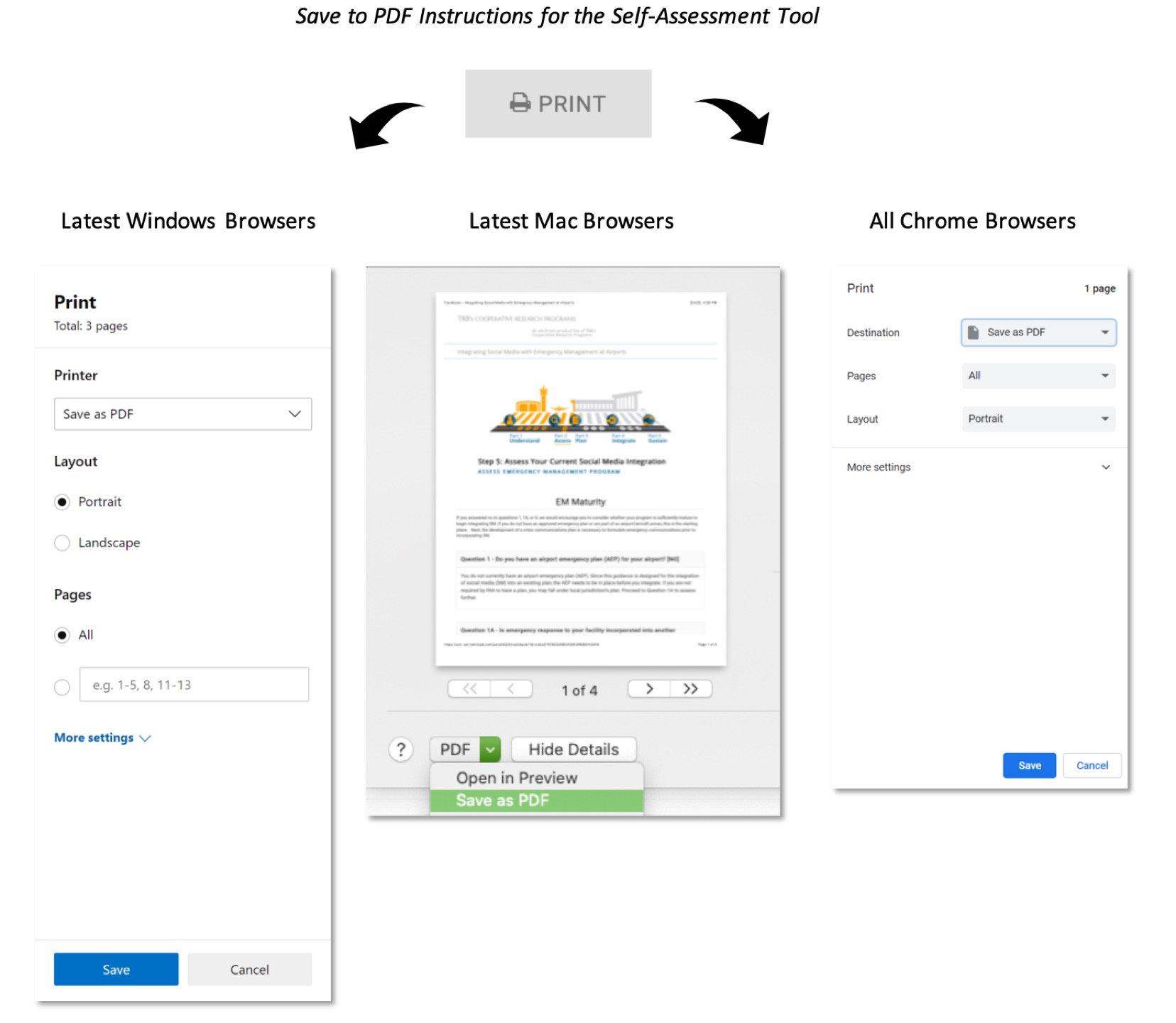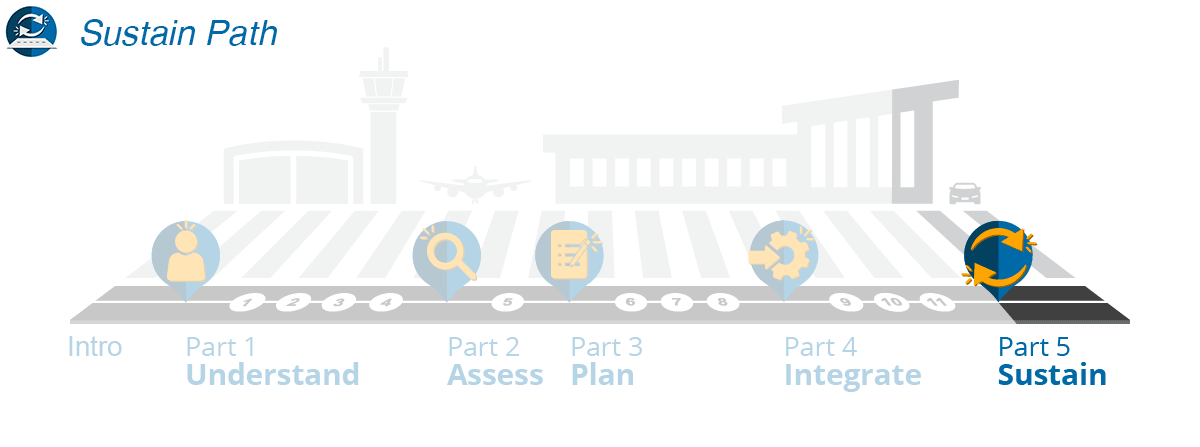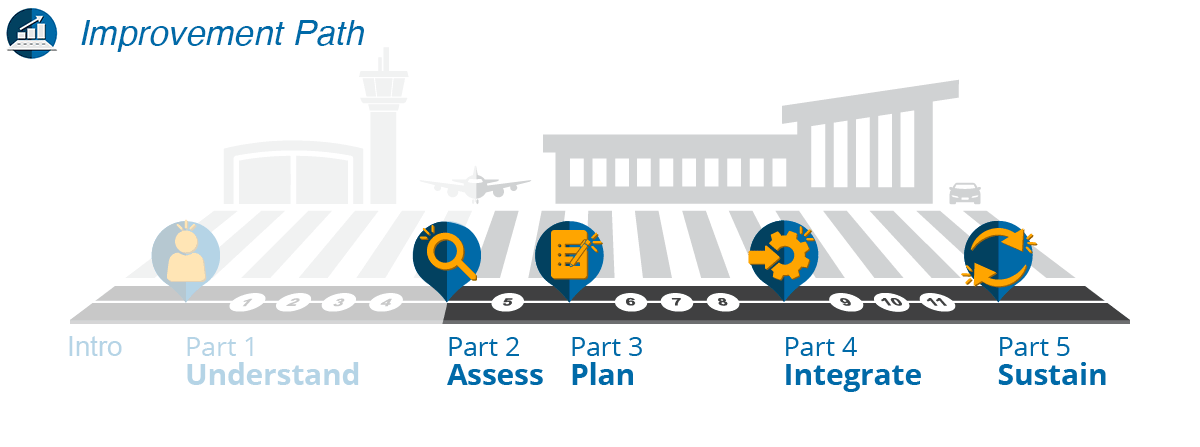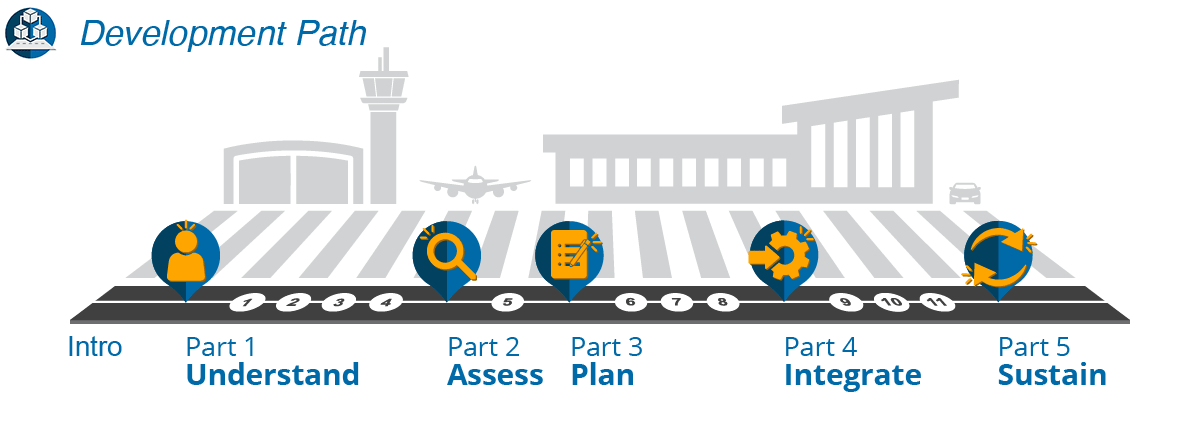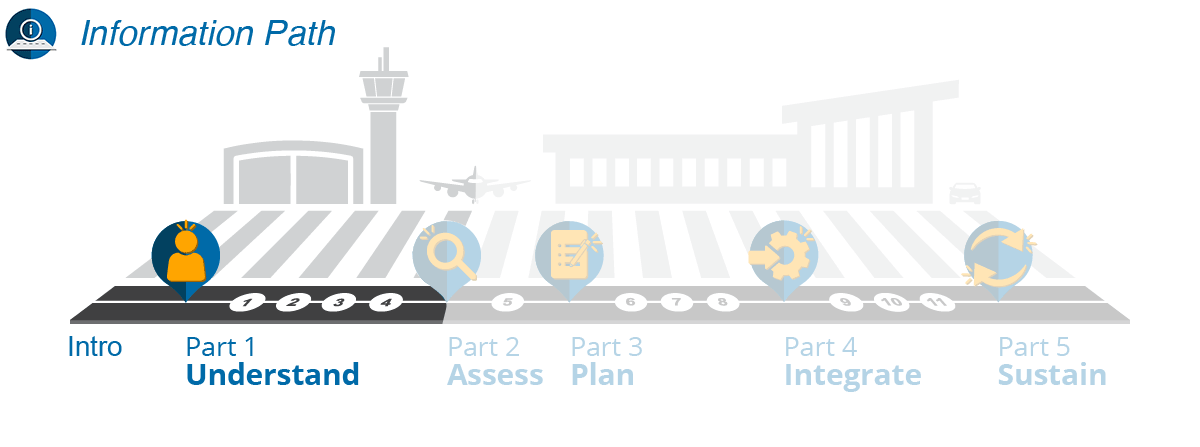Executive Summary
Part 1: Understand
The foundation to building an SMEM program is properly understanding SM and how it can benefit EM. Part 1 provides the baseline understanding for the rest of the journey and a way to become familiar with the terms and concepts used throughout the WebResource. This part is important for everyone who is sharing information and collaborating within the whole community: from the SM and EM managers and first responders to the airport and community stakeholders and local, county, state, and federal partnering agencies.
No matter the level of maturity in these areas, going through the steps will provide insight into the use of SMEM and effectively set up the next steps to integrate SM into EM at the airport.
Understand the Basic Functions of Social Media and the Social Media Management Functions
| Function | What Is It? |
 Listening |
Process of monitoring digital conversations to understand what airport visitors, passengers, internal and external stakeholders, etc., are saying about the airport. Filtering tools can be used to facilitate listening. |
 Engagement |
Process of connecting directly with individuals in response to questions and/or comments. Engagement can be performed on SM channels by replying to public comments or directly messaging with users. It can also encompass the use of private secure responder messaging channels to facilitate emergency response. |
 Publishing |
Process of proactively posting/communicating with the public and stakeholders to make announcements or provide updates. The goal is to communicate well enough that the audience pays attention to what is being said. Coupled with other forms of communicating (traditional media, public address announcements, etc.), publishing can broaden your reach. |
 Reporting |
Process of consolidating and internally distributing the information gathered through the other three functions. This information can be useful during real-time situations to assess the effectiveness of your engagement and publishing activities and to focus your listening. Reporting is also useful for post-event evaluations and process improvements. |
Understand Social Media Uses in Emergency Management
EM examines potential emergencies and incidents based on the risks posed by likely hazards and develops/implements plans designed to reduce the impact of these events on the airport. For risks that cannot be eliminated, plans are designed to respond to and deal with the consequences of actual events and to recover from those events. Figure 4 depicts the four phases of EM.
Each of the SM functions (listening, engagement, publishing, and reporting) can be integrated with each of the phases of EM. Since both Mitigation and Preparedness are pre-response phases, the SM uses during each are very similar. During these phases, you can use SM listening to assess who to follow on SM channels to gain reliable information and to gain an understanding of the important issues for airport customers and stakeholders. You can also use SM engagement to connect with those who have posted about safety issues at your airport and to practice your skills during non-event times. During this phase, you can also publish safety information in advance of an event such as adverse weather.
The Response and Recovery phases are the phases we most typically think of when considering SM integration. During these phases, listening can provide you with early indicators of building events. It can also supply you with information that could impact real-time response efforts or identify airport users who have posted that they are affected by an issue. Through engagement, you can provide real-time direction to individuals to help keep them safe. You can also use private secure messaging channels to coordinate activities with your responders and stakeholders. Further, you can use publishing to keep customers up to date on issues and to give actionable information for them to make decisions on what to do. Then, through SM analysis and reporting, emergency operations center (EOC) personnel can assess if messages are reaching the desired audience.
Using SM for EM as described above can result in the following benefits to your airport, customers, and stakeholders.
- Reputation: Helps to build and protect positive reputations
- Response Efficiency: Provide information to and share information from first responders to accelerate response and recovery
- Communication: Improve communication among all stakeholders and the public
- Whole Community: Facilitates involvement of the whole community during and after an event
Benefits realized will be different for each airport, especially considering different airport sizes and varying SM and EM maturity levels. But SMEM is not without its challenges, both in setting up the program and in practice. In building the program, you may find it difficult to get all stakeholders involved. You may also experience challenges in procuring the right technology and training personnel to the proper proficiency level. Further, SM integration requires a change in culture among those involved-a change which can take some time. Even with these challenges, the benefits far outweigh any roadblocks you may encounter.
